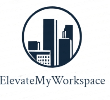Introduction
Office design is more than just aesthetics—it directly influences employee productivity, creativity, and well-being. Neuroaesthetic office design is a science-backed approach that optimizes workspaces for cognitive efficiency and emotional comfort. Research suggests that well-designed work environments can enhance productivity by up to 20%, reduce stress, and improve overall job satisfaction.
In this blog, we explore how neuroaesthetic principles can transform office interiors, helping businesses create spaces that stimulate focus, inspire creativity, and support mental well-being.
What is Neuroaesthetic Office Design?
Neuroaesthetics is the study of how our brains respond to different visual and sensory stimuli. When applied to office design, it focuses on:
- Colors that influence mood and concentration
- Textures and materials that enhance comfort
- Lighting that regulates energy levels
- Layouts that promote engagement and reduce cognitive overload
Key Elements of Neuroaesthetic Office Design
1. Symmetry & Order: Reducing Cognitive Load
Disorganized workspaces can overwhelm employees and reduce efficiency. A structured office layout with symmetrical furniture arrangements and clear pathways helps reduce mental clutter, making it easier to focus on tasks.
2. Biophilic Design: Bringing Nature Indoors
Studies show that incorporating natural elements into office spaces reduces stress by 30% and increases overall well-being. Ways to implement this:
- Indoor plants for air purification and visual appeal
- Water features to create a calming environment
- Large windows for natural light exposure
3. Lighting & Color Psychology: Enhancing Mood & Energy
The right lighting and colors can boost energy levels and concentration:
- Blue & Green: Improve focus and efficiency (best for workstations)
- Yellow: Enhances creativity (ideal for brainstorming zones)
- Red: Increases alertness (great for dynamic workspaces)
- Warm LED lighting: Reduces eye strain and supports relaxation
4. Textures & Materials: The Power of Touch
Soft textures (wood, fabric, carpets) create a cozy and inviting atmosphere, while sleek materials (glass, metal) give a modern and high-energy vibe. A balanced mix of textures can enhance the tactile experience of a workspace.
Case Studies: Companies Using Neuroaesthetic Design
1. Google’s Biophilic Workspaces
Google integrates natural light, indoor gardens, and open collaboration areas in its offices worldwide. Employees report higher engagement and well-being due to these nature-inspired elements.
2. Microsoft’s Smart Office in Amsterdam
Microsoft uses AI-driven lighting, flexible seating, and personalized work zones to improve focus and adaptability. The result? A 15% increase in employee productivity.
How to Implement Neuroaesthetic Design in Your Office
Even small changes can have a big impact! Here’s how you can apply neuroaesthetic principles in any workspace:
- Declutter & Organize: Keep desks and pathways clear to reduce distractions.
- Improve Lighting: Use warm LEDs and natural light to enhance comfort.
- Incorporate Nature: Add plants, wooden textures, and water elements.
- Color Psychology: Choose colors based on team function and mood enhancement.
- Ergonomic Furniture: Use chairs, desks, and layouts that support posture & comfort.
The Future of Neuroaesthetic Office Design
With advancements in AI and smart interiors, future office spaces will be more personalized and responsive. Some trends to watch:
🔹 AI-powered adaptive workstations that adjust to employee needs
🔹 Sensory-based office design that reacts to emotions and energy levels
🔹 Immersive virtual reality (VR) workspaces for hybrid collaboration
By embracing these trends, companies can create work environments that evolve with employees' needs.
Conclusion
Neuroaesthetic office design isn’t just about looks—it’s about optimizing the workplace for maximum productivity, mental well-being, and creativity. From color psychology to biophilic elements, businesses that invest in neuroscience-backed design can expect happier, more engaged employees and better work outcomes.
Looking to transform your office space?
At White Hills Interior, we specialize in creating productivity-boosting, employee-friendly workspaces using the latest design innovations. Contact us today to reimagine your office with neuroaesthetic principles!


Comments
Post a Comment